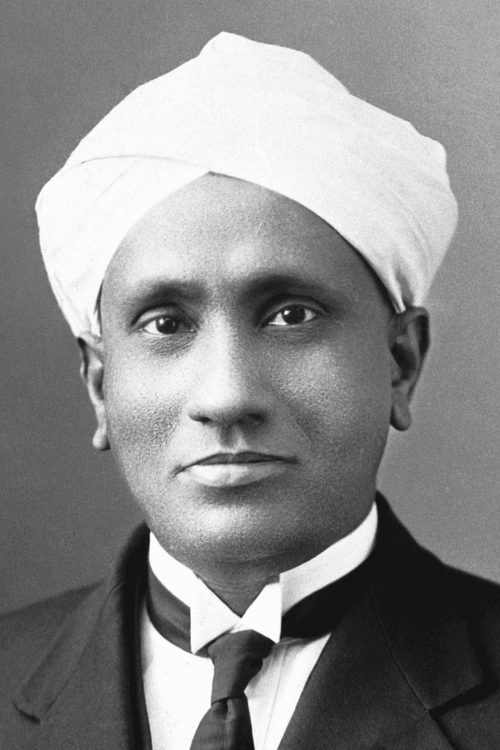C.V. Raman Biography & Raman Effect Explained for Kids

Table of Contents
- Early Life and Education of C.V. Raman
- Early Career: Bridging Bureaucracy and Science
- The Mediterranean Spark: The Birth of the Raman Effect
- The Discovery of the Raman Effect
- Global Recognition and Accolades
- Raman’s Legacy in Indian Science
- Why Raman Still Inspires the Next Generation
- PlanetSpark’s Creative Writing Course: Features and Benefits
- Conclusion
- FAQs about Sir C.V. Raman and PlanetSpark Creative Writing
Sir Chandrasekhara Venkata Raman, popularly known as C.V. Raman, remains one of the most influential scientists in Indian history. His groundbreaking discovery of the Raman Effect not only earned him a Nobel Prize in Physics in 1930 but also positioned India on the global scientific map. His journey from a child prodigy in a Tamil Brahmin household to becoming a globally recognized physicist is one of passion, intellect, and relentless curiosity.
Before we dive into the fascinating life of this iconic scientist, here is something equally exciting for young learners. PlanetSpark’s Creative Writing Course for Kids is designed to nurture the scientific and artistic minds of tomorrow. With expert-guided 1:1 live sessions, AI tools, gamified learning, and engaging writing platforms like Spark Diary, children learn to express themselves confidently through stories, essays, and poems. Give your child a head start in communication and creativity by booking a free trial session today!
Early Life and Education of C.V. Raman
Born on 7th November 7, 1888, in Tiruchirapalli, Tamil Nadu, C.V. Raman belonged to a family deeply rooted in academics and tradition. He was one of eight siblings in a Hindu Tamil Brahmin family. From an early age, Raman exhibited an exceptional aptitude for learning, often astounding teachers and elders with his intellect. His father, a lecturer in mathematics and physics, greatly influenced his academic inclinations.
Raman completed his secondary education at the age of 11 and his higher secondary at just 13. By the age of 16, he had already graduated with a Bachelor’s degree in Physics with honours, topping his class. Even before completing his graduation, Raman published his first scientific research paper on the ‘diffraction of light’, indicating his early passion for optics and light behavior. His academic trajectory was steep and impressive, culminating in a Master’s degree before he turned 19.

Early Career: Bridging Bureaucracy and Science
Despite his scientific brilliance, Raman initially pursued a government job and was appointed as Assistant Accountant General in the Indian Finance Service, stationed in Calcutta. This might seem like a detour from science, but Calcutta was home to the Indian Association for the Cultivation of Science (IACS), India’s first research institute. Raman spent his evenings at IACS, conducting experiments on acoustics and optics. These amateur yet passionate investigations soon caught the attention of the scientific world.
His research at IACS earned him growing recognition and eventually led to his appointment as the ‘Palit Professor’ in the Physics Department of the University of Calcutta. Here, Raman got the opportunity to conduct full-time research and mentor budding scientists, including his notable associate, K. S. Krishnan.
Unlock your child’s writing talent with PlanetSpark’s Creative Writing Course. Book a free trial class today!
The Mediterranean Spark: The Birth of the Raman Effect
In 1921, Raman had his first opportunity to visit Europe. While sailing across the Mediterranean Sea, he noticed the deep blue colour of the water and questioned the existing explanation that Rayleigh-scattered light caused the phenomenon. Driven by curiosity and a desire to offer a better explanation, he began experiments on light scattering upon his return to India.
Meanwhile, in 1923, Arthur Compton’s discovery (now called the Compton Effect) proved that X-rays could behave like particles. This revolutionary finding in quantum physics motivated Raman to explore whether visible light exhibited similar properties. Working closely with K. S. Krishnan, Raman embarked on a series of experiments that would ultimately change the understanding of light forever.
The Discovery of the Raman Effect
In 1927, after years of investigation, Raman and Krishnan discovered a phenomenon where light passing through a liquid not only scattered but also changed its wavelength. Krishnan observed that the scattered light included new spectral lines in addition to those of the incident light. Raman called this phenomenon ‘modified scattering of light’ and sent his research manuscript to the journal Nature.
To study this scattering in detail, Raman designed a new spectrograph that filtered sunlight using violet and green filters and observed its scattering through different liquids. When violet light was used, they observed a weak greenish glow from the liquid, a signal of new, shifted wavelengths. This was the Raman Scattered Light. Over 60 different liquids showed similar behavior, confirming the reliability of the discovery.
Raman’s findings provided substantial evidence for the quantum nature of light, reinforcing the developing field of quantum physics. On February 28, 1928, this discovery was officially announced and later came to be known as the Raman Effect.

Global Recognition and Accolades
The scientific world hailed Raman’s discovery as revolutionary. In 1930, he was awarded the Nobel Prize in Physics, becoming the first Asian and non-white individual to receive the honor in science. Before that, he had been made a Fellow of the Royal Society in 1924 and was knighted in the same year he won the Nobel Prize, receiving the title Sir C.V. Raman.
The Raman Effect has found applications in several fields such as molecular spectroscopy, chemical analysis, and material science. It is now widely used in laboratories for material characterization and medical diagnostics. In recognition of his monumental contributions, the Indian government declared February 28 as National Science Day.
Fuel your child’s imagination and writing skills with PlanetSpark. Start with a free creative writing trial class today.
Raman’s Legacy in Indian Science
Post-Nobel, C.V. Raman continued his journey of scientific excellence in India. He served as the Director of the Indian Institute of Science (IISc), Bangalore, and later established the Raman Research Institute in 1948. Here, he focused on optics and the physics of crystals, mentoring countless young minds along the way.
He was an outspoken advocate for nurturing scientific research in India. Raman believed that science must be accessible, and Indian scientists should develop their unique approaches instead of blindly following the West. His fierce nationalism blended seamlessly with his academic pursuits, making him a towering figure in Indian science.
Why Raman Still Inspires the Next Generation
C.V. Raman’s life teaches children and young adults that curiosity, perseverance, and independent thinking can lead to groundbreaking achievements. Despite facing limited resources and recognition in a colonized nation, he carved his path through sheer dedication and love for knowledge.
Today, PlanetSpark carries forward this spirit of inquiry and creativity. Our Creative Writing and Public Speaking Courses equip children with the tools to express their ideas fearlessly, be it in science, literature, or day-to-day communication. With advanced features like 1:1 live classes, AI-enabled tools, and gamified learning, PlanetSpark ensures every learner discovers their voice.
Give your child the tools to write confidently. Sign up for PlanetSpark’s Creative Writing Course, first session is free!
PlanetSpark’s Creative Writing Course: Features and Benefits
PlanetSpark is redefining how communication skills are taught to children. Here’s what makes our creative writing and public speaking courses the best choice:
1. 1:1 Personal Trainers for Every Child
Each student is matched with a certified communication expert who tailors learning to their individual personality and pace.
2. Personalised Curriculum
A unique learning roadmap targets grammar, fluency, content structuring, and confidence.
3. SparkX – AI Video Feedback
AI analyzes speeches for voice clarity, grammar, posture, and confidence to provide measurable feedback.
4. AI-Led Practice
Children practise storytelling and speeches with a virtual AI coach that gives real-time suggestions.
5. Spark Diary – Digital Writing Journal
Daily reflections, creative writing prompts, and journaling build writing fluency and creativity.
6. Gamified Modules
Interactive activities like Antonym Quiz and Grammar Guru Challenge make learning fun.
7. Structured Parent-Teacher Meetings
Regular PTMs keep parents updated and involved in their child’s journey.
8. Comprehensive Reports
Periodic detailed evaluations on writing, speaking, body language, and fluency.
9. Learning Clubs
Join communities like the Debate Club, the Podcasting Circle, and the Writers Guild for peer learning.
10. Sparkline: Safe Sharing Space
Kids post and engage with peer-created content in a moderated, secure environment.
11. Contests and Recognition Events
Public speaking contests, open mics, and creative writing events to celebrate every learner.
12. SparkBee and SparkShop
SparkBee provides quizzes and rewards, while SparkShop offers budget-friendly eBooks for grammar and vocabulary.
Book a Free Trial Class now and see your child become a confident storyteller, speaker, and writer!
Conclusion
Sir C.V. Raman’s life is an inspiring testament to what passionate learning and scientific curiosity can achieve. His work didn’t just impact physics; it laid the groundwork for future Indian scientists to dream big. From questioning the colour of the sea to proving the quantum nature of light, Raman exemplified intellectual courage.
At PlanetSpark, we aim to nurture the same spirit in every child. Our courses are crafted to help learners observe the world deeply, express ideas creatively, and speak with conviction. Whether your child aspires to be a scientist, a writer, or a leader, our holistic learning system will support every step of their journey.
Boost storytelling, grammar, and expression with PlanetSpark’s 1:1 Creative Writing classes. Try it free!
FAQs about Sir C.V. Raman and PlanetSpark Creative Writing
Q1. What is the Raman Effect, and why is it important?
The Raman Effect is the change in wavelength of light when it is scattered by a molecule. It’s crucial in understanding molecular composition and has vast applications in physics, chemistry, and medical diagnostics.
Q2. At what age did C.V. Raman win the Nobel Prize?
He received the Nobel Prize in Physics in 1930 at the age of 42.
Q3. Why is February 28 celebrated as National Science Day?
February 28 marks the discovery of the Raman Effect. It is celebrated to honour scientific innovation and to inspire young minds in India.
Q4. How does PlanetSpark help children improve creative writing?
PlanetSpark uses 1:1 expert sessions, gamified modules, AI feedback, and digital journaling tools like Spark Diary to make writing fun and effective.
Q5. What age group is PlanetSpark’s Creative Writing Course designed for?
PlanetSpark’s Creative Writing Course is ideal for children aged 4 to 14 years, with age-appropriate modules that grow with your child’s learning level and confidence.
Q6. How does PlanetSpark help children become better writers and communicators?
PlanetSpark blends 1:1 live expert-led sessions, AI-enabled speech evaluation, gamified writing tools, and daily writing practice through Spark Diary to improve grammar, storytelling, creativity, and confidence.
Q7. How do I get started with PlanetSpark’s Creative Writing Course?
You can get started by booking a free trial class on PlanetSpark’s official website. A certified trainer will assess your child’s current level and suggest a personalized learning roadmap.
Personalized Communication Report
Record a video to get a AI generated personalized communication report for your child

Hi There, want to try these
tips for your child with
LIVE with our expert coach?
Let's check your child's
English fluency
